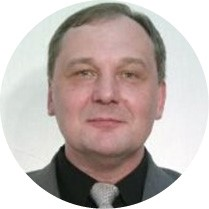Laser Treatment of Metals and Alloys
A special issue of Metals (ISSN 2075-4701). This special issue belongs to the section "Additive Manufacturing".
Deadline for manuscript submissions: closed (30 November 2021) | Viewed by 15890
Special Issue Editor
Interests: laser processing; material properties; structure formation; beam shaping; optical systems
Special Issues, Collections and Topics in MDPI journals
Special Issue Information
Dear Colleagues,
Laser treatment methods based on electrophysical, electrochemical, and physicochemical effects solve a wide range of problems associated with processing various materials with laser radiation in order to change their geometric parameters or improve physical properties. At present, laser processing technologies for materials (particularly metals and alloys) have achieved significant development, occupy a considerable place both in industry and in scientific research, and their scope is constantly expanding. The effect of a laser beam on metallic materials is described by general provisions that are associated with the absorption and reflection of radiation, the propagation of absorbed energy, etc. A number of specific features are also taken into account.
The purpose of this Special Issue is to combine the top knowledge in the area of laser–material interaction, providing an opportunity for sharing new ideas and discovering solutions. This Special Issue discusses the newest research on the possibilities of laser and laser-assisted macro-, micro-, and nanotechnologies, forming the required complex of structures and properties of metals and alloys. Scientific articles based on experimental, numerical, and theoretical studies addressing innovative applications are welcome. Original research papers and review articles on the development and application of optical systems for the laser processing of metallic materials are also welcome.
Prof. Dr. Serguei P. Murzin
Guest Editor
Manuscript Submission Information
Manuscripts should be submitted online at www.mdpi.com by registering and logging in to this website. Once you are registered, click here to go to the submission form. Manuscripts can be submitted until the deadline. All submissions that pass pre-check are peer-reviewed. Accepted papers will be published continuously in the journal (as soon as accepted) and will be listed together on the special issue website. Research articles, review articles as well as short communications are invited. For planned papers, a title and short abstract (about 250 words) can be sent to the Editorial Office for assessment.
Submitted manuscripts should not have been published previously, nor be under consideration for publication elsewhere (except conference proceedings papers). All manuscripts are thoroughly refereed through a single-blind peer-review process. A guide for authors and other relevant information for submission of manuscripts is available on the Instructions for Authors page. Metals is an international peer-reviewed open access monthly journal published by MDPI.
Please visit the Instructions for Authors page before submitting a manuscript. The Article Processing Charge (APC) for publication in this open access journal is 2600 CHF (Swiss Francs). Submitted papers should be well formatted and use good English. Authors may use MDPI's English editing service prior to publication or during author revisions.
Keywords
- laser material processing
- metals and alloys
- laser treatment methods
- innovative applications
- laser and laser-assisted
- structuring and modification
- structure formation
- improvement of properties
- laser beam shaping
- optical systems
Benefits of Publishing in a Special Issue
- Ease of navigation: Grouping papers by topic helps scholars navigate broad scope journals more efficiently.
- Greater discoverability: Special Issues support the reach and impact of scientific research. Articles in Special Issues are more discoverable and cited more frequently.
- Expansion of research network: Special Issues facilitate connections among authors, fostering scientific collaborations.
- External promotion: Articles in Special Issues are often promoted through the journal's social media, increasing their visibility.
- Reprint: MDPI Books provides the opportunity to republish successful Special Issues in book format, both online and in print.
Further information on MDPI's Special Issue policies can be found here.





